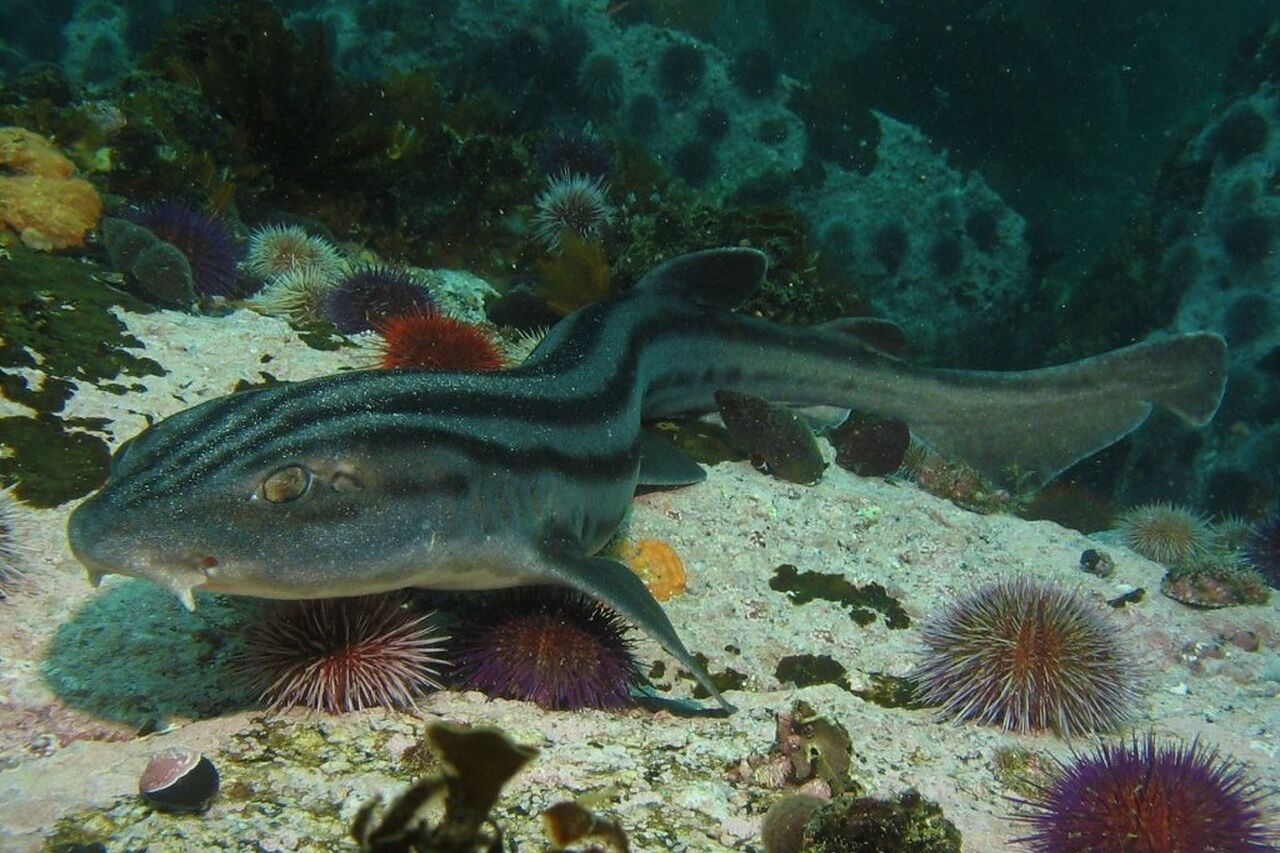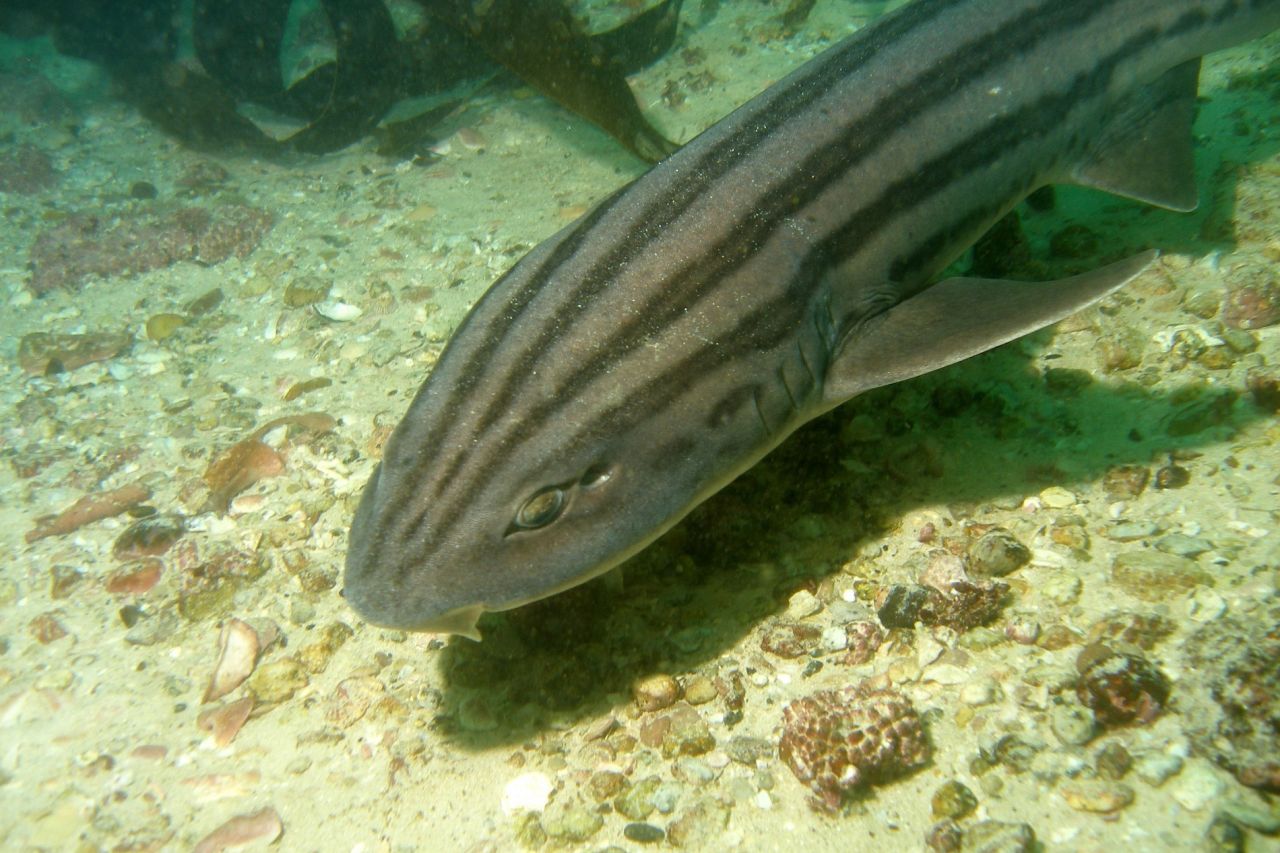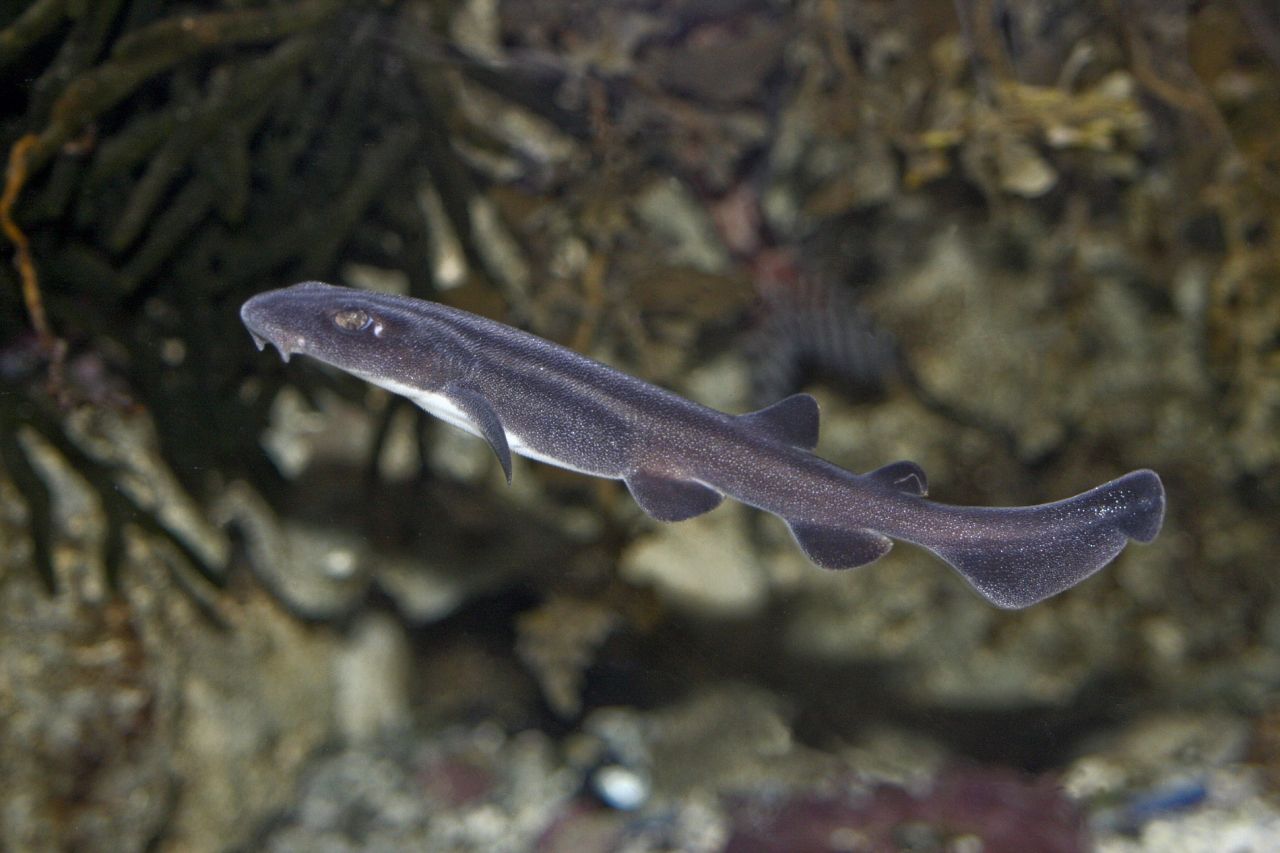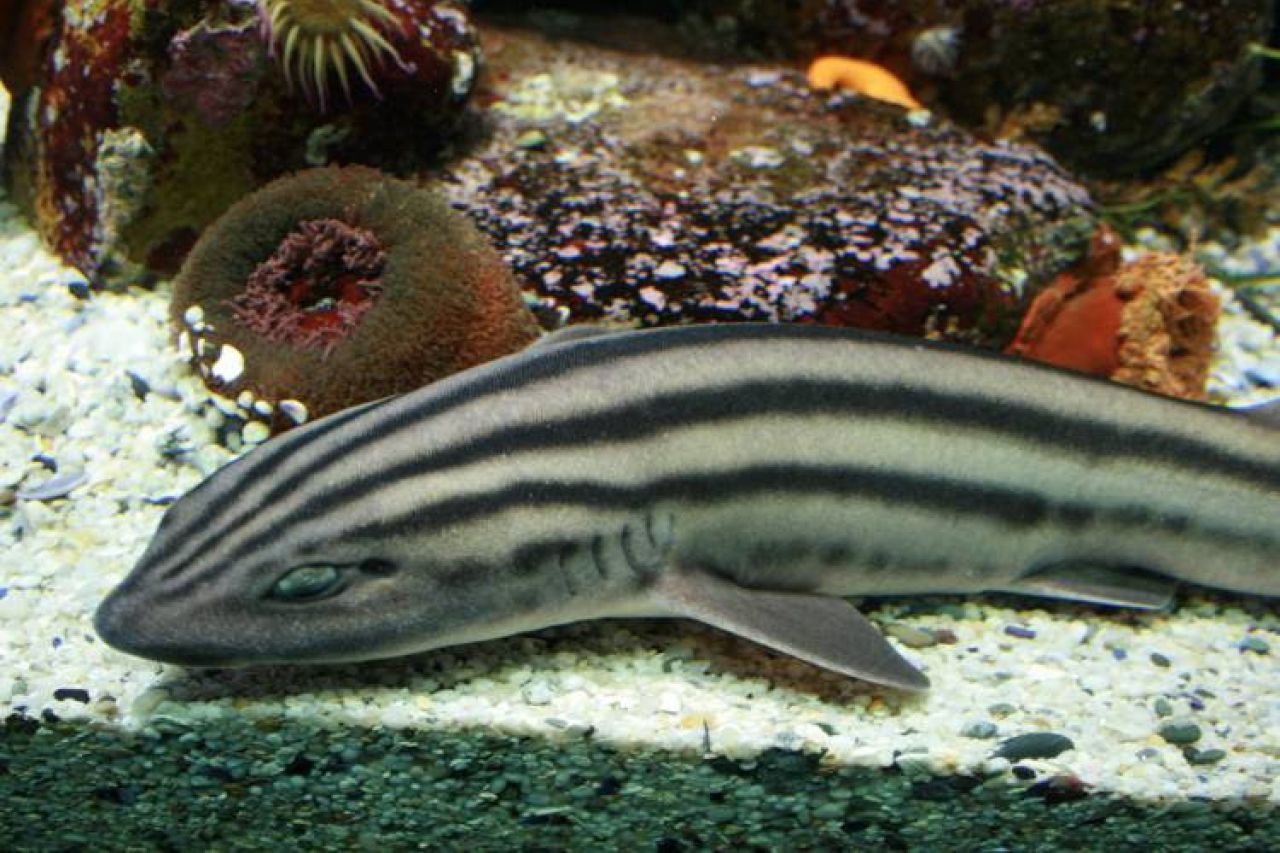Pyjama sharks are small catsharks endemic to the South African coastline, that have received some recent attention thanks to the prominent role they play in Craig Foster of the Sea Change Project's My Octopus Teacher. They may be cute, and they may be the "villains" of everyone's favourite nature documentary, but what are pyjama sharks really all about?

Pyjama sharks (Poroderma africanum) are elongated, slender sharks with short whisker-like barbels that give them the name "catshark". They grow to about a metre long and can weigh up to 8 kg (which is a bit longer and heavier than two chonky housecats). Of course, their most notable characteristics are their alternating black and grey stripes that run the length of their bodies, from snout to tail tip.
During the day, pyjama sharks spend their time hiding motionless in caves and rocky crevices or under fronds of kelp. They need to pick their hiding spots carefully - they are easy prey for opportunistic Cape fur seals and broadnose sevengill sharks. They don't have any defences against these large predators, so when threatened they will roll themselves into a "doughnut", protect their eyes with their tails, and wait for an opportunity to escape.
When these nocturnal hunters thrive is at night! They are opportunistic predators and will feed on a wide variety of prey from small fish to molluscs. They will also happily hunt solo, or team up with other pyjama sharks to find prey depending on the situation.

Their flat, cusped teeth are ideal for gripping slippery prey, like octopuses, and for crushing prey with hard shells and exoskeletons, like West Coast rock lobsters, which is a favourite of theirs in False Bay. Using the excellent grip of these teeth, pyjama sharks can perform a "death roll" similar to that of an alligator, which allows them to pry prey off of rocks, or to tear an arm off an octopus that is too large to be eaten completely.
Pyjama sharks are themselves one of the main prey animals of the far larger broadnose sevengill sharks, and are eaten by other large sharks too. As juveniles, the pyjama sharks are prey for a variety of species, from large fish to seals, and there are even species of snails that specialise in eating them as embryos inside their egg cases.
There is no mating season for pyjama sharks and they are able to mate whenever there is a sufficient abundance of food. Females lay two eggs at a time, and attach them to seaweed or brittle stars in places they think are well-hidden, where they remain until they hatch about five months later.
Currently, pyjama catsharks are listed as a Least Concern species by the IUCN, which made a note that their small distribution and the increased pressure being placed on it is something to keep an eye on. Unfortunately, many fishermen view small sharks, like pyjama sharks, as pests that steal bait, waste their effort when caught as bycatch, and as competition for desirable more food or sport fish - and many of these fishermen kill these sharks indiscriminately, rather than releasing them. The reality is that sharks are crucial to maintaining healthy ecosystems, so this is doubly unfortunate, as these misguided actions will actually harm the fish stocks that these fishermen depend on in the long run.
For the above reason, WWF SASSI lists pyjama shark as a Red List species. Although it is not commonly sold, its addition to the Red List is a further deterrent to those who may choose to kill, rather than release these sharks.

If you love pyjama sharks be sure to visit those living in the Kelp Forest Exhibit and the Cold Reef Exhibit of the Skretting Diversity Gallery of the Two Oceans Aquarium, or take up diving as a hobby and visit them in False Bay's beautiful underwater forests and see them for yourself!

Related News
Sign up to our Newsletter
Receive monthly news, online courses and conservation programmes.





